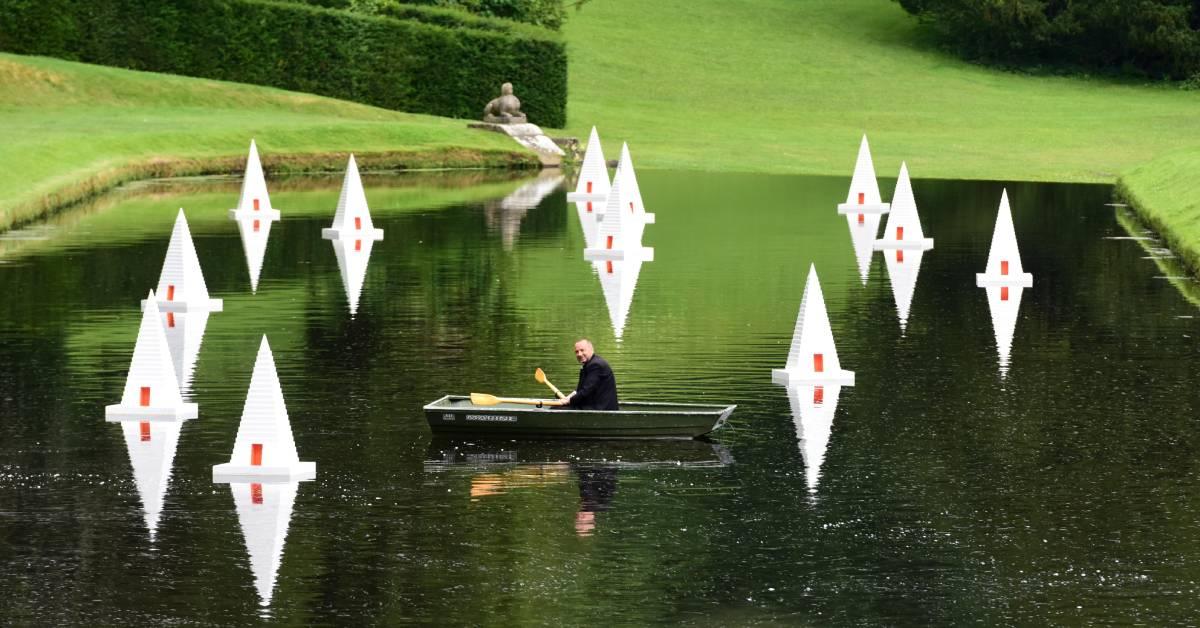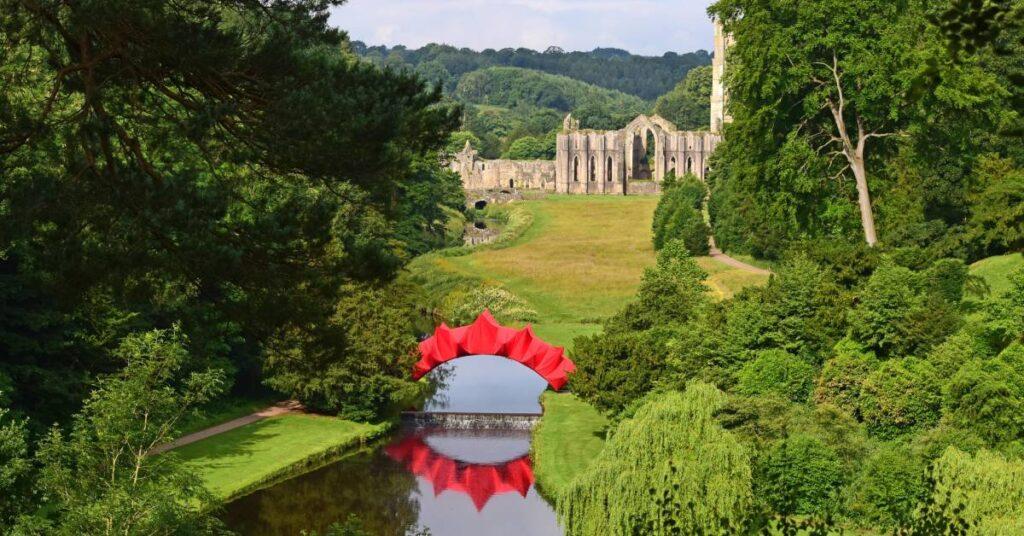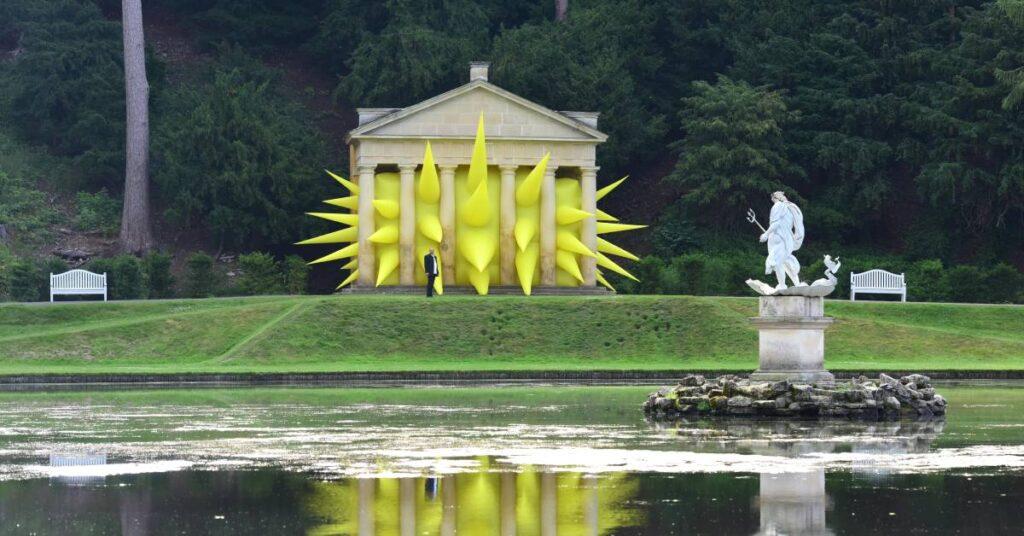Subscribe to trusted local news
In a time of both misinformation and too much information, quality journalism is more crucial than ever. By subscribing, you can help us get the story right.
- Subscription costs less than £1 a week with an annual plan.
Already a subscriber? Log in here.
10
Jul 2021
Pyramid artforms at Fountains Abbey bring echoes of the past

Striking contemporary art, with echoes from the past, has been installed at Fountains Abbey and Studley Royal water garden.
Visitors to the 800-acre UNESCO World Heritage site, will see a visual transformation, brought about through the work of Steve Messam.
His three thought-provoking installations titled These Passing Things, have been designed to prompt another way of looking at landscape and historic buildings.
Drifted - 12 Floating pyramids in the canal – takes its inspiration from a lost pyramid folly, designed as a memorial monument to honour John Aislabie, the original designer of the water garden.
Following Aislabie's death, in June 1742, his son William commissioned a 16-metre-high funerary pyramid.

Bridged
However, despite archive records of scale drawings and detailed costings for the piece, no further mentions of it were ever made and no record or evidence exists of this mysterious pyramid ever being built
Mr Messam's second artwork is Bridged – a scarlet contemporary bridge sitting across the river Skell, close to the site of a lost iron bridge from the 18th century.
The Drifted and Bridged installations will be on display throughout the summer, while Spiked - an inflatable artwork - will be making occasional appearances.
It bursts through the columns of The Temple of Piety, with a statue of Neptune, the Roman god of the sea, looking on from the lake.

Spiked,
The Aislabie family, created many follies to surprise and delight their 18th century guests and Mr Messam hopes his contemporary works will attract similar attention.
He said:
Justin Scully, general manager at Fountains Abbey and Studley Royal, said:
Read more:
- Brimham Rocks as they've never be seen before
- Halls of Ripon brings department store shopping back to the city
Through its Trust New Art programme, which is supported by Arts Council England and the Arts Council of Wales, the National Trust aims to connect more people to its places through contemporary arts.
More details can be found at nationaltrust.org.uk/fountainsabbey
0